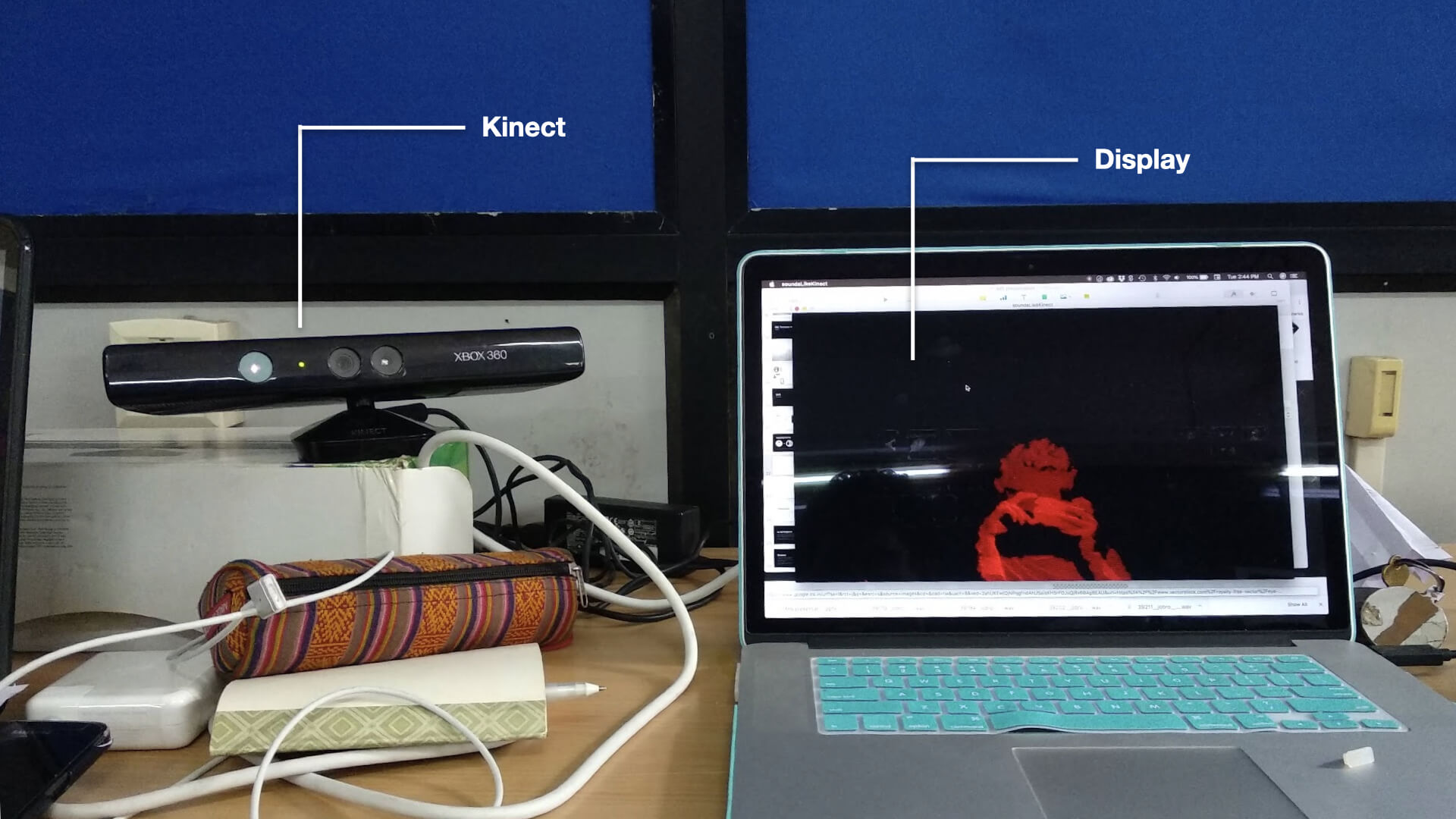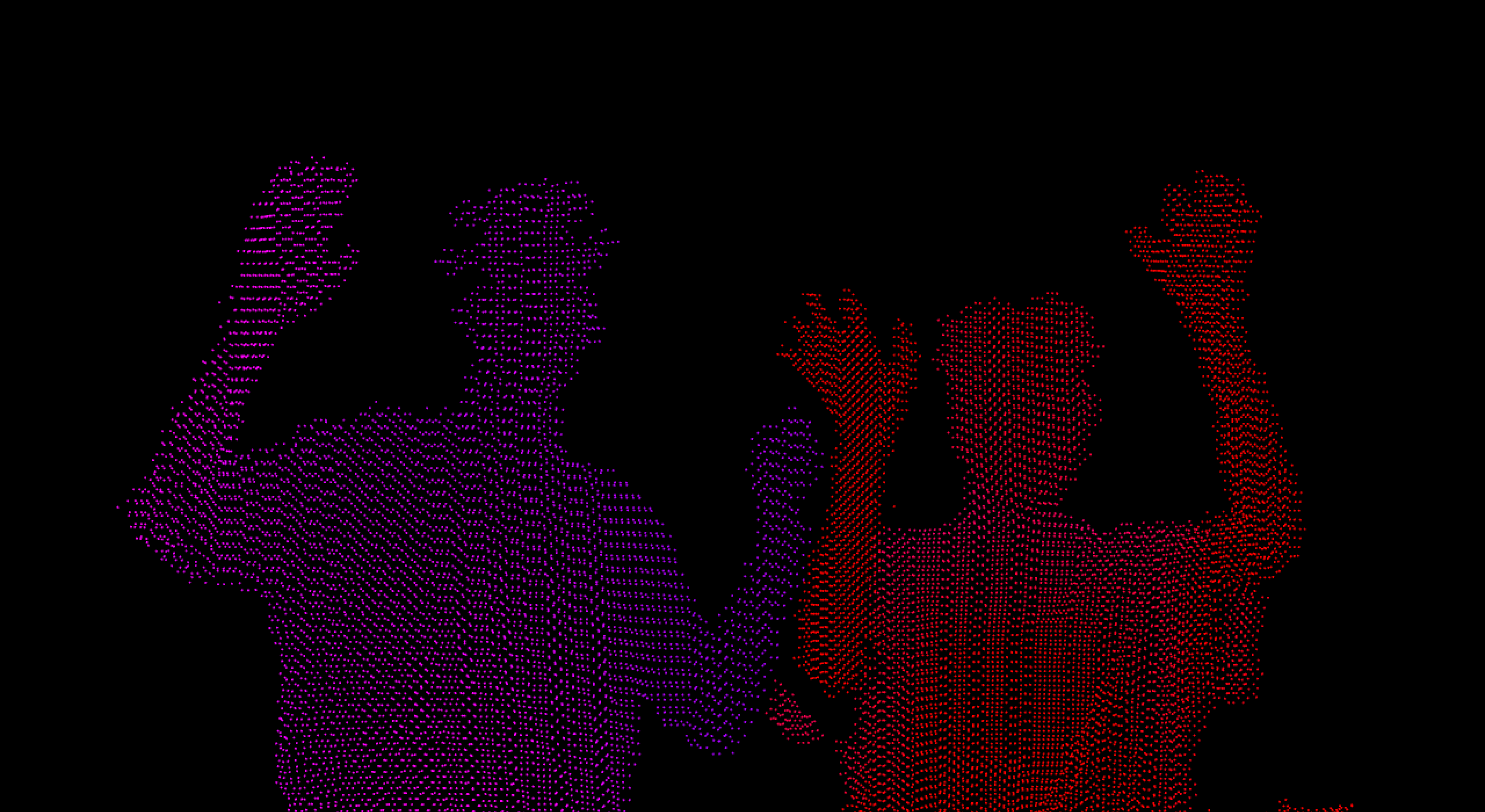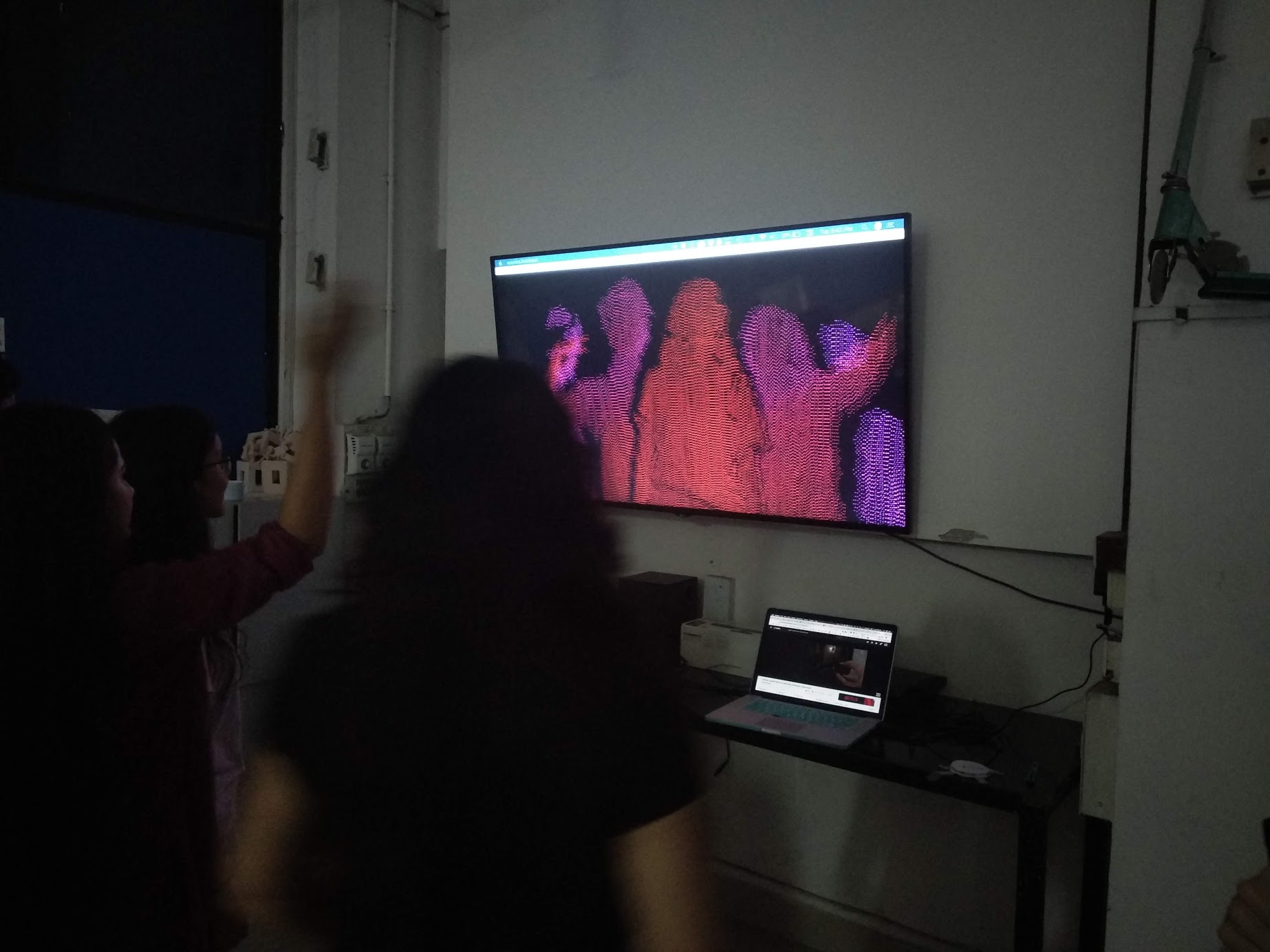Dots - an interactive installation

This was one of the weirder things I’ve done at college.
What is this?
Dots is an an experimental installation I worked on with my friend Rashmi in my first semester at IDC School of Design. We wanted to create a fun installation that could grab the attention of someone passing by it, and let people explore what it could do without any explanations.
How did we do it?
We started out by trying to use Processing and the input from a video camera to try and allow people to ‘paint’ on a screen by moving their arms in front of it. The camera input turned out to be a slow and inefficient way of detecting gestures, and our instructor for the course suggested we use a Kinect sensor instead. There was thankfully a first generation Kinect available in the IDC office, and a couple of Daniel Schiffman tutorials later, Rashmi and I we were ready to make something.

The test setup for running dots. We later used a large wall TV mounted to run the installation.
While going through some of these tutorials, I was fascinated with just the raw data the infrared sensor was capturing. I wondered if I could somehow represent this depth data in 2 dimensions, and came up with the idea of mapping depth to color. Objects closer to the sensor could be warm colors, and objects further away could be cool.

Rashmi (right) is standing closer to the screen than me (left) and so appears in warmer colors.
The result
While we didn’t have enough technical expertise to make exactly what we wanted, we tried to make Dots a multisensory experience by having the dots vibrate in reaction to sound.
Celebrating the first time we got the code working!
Making loud noises (like the high-five) also causes the dots to vibrate.
We played music when we invited people to test the installation, and this made Dots something of a party starter. People called other people and soon we had a party on our hands.




